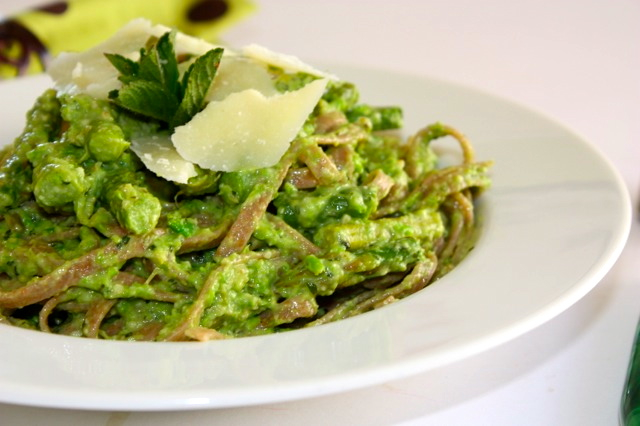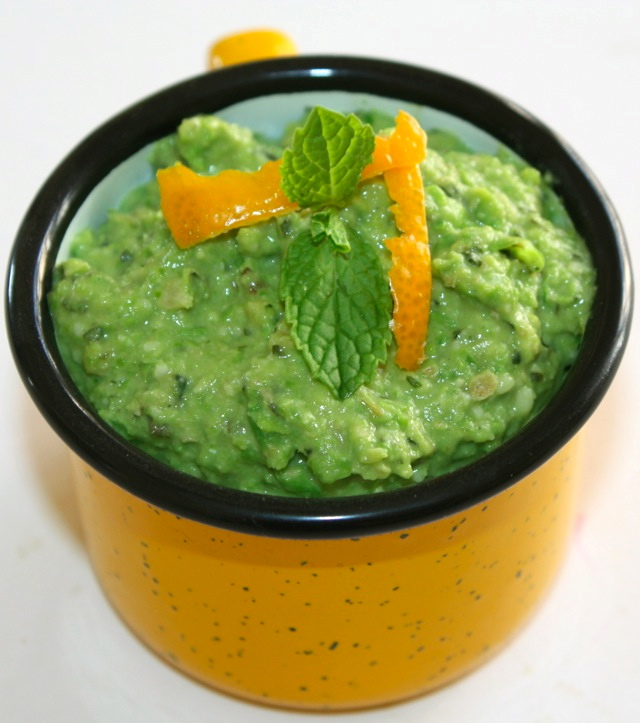Let’s celebrate spring – Linguini with fresh pea pesto, mint and pecorino
Festeggiamo la primavera – Linguine con pesto di piselli, menta e pecorino

 When you look at the ingredients of this pesto, you might think, it will be too strong especially with the mint and pecorino. When you taste it, you realize that it is indeed fragrant but delicate. I used some whole grain linguini made with red winter wheat but any short pasta such as penne or rigatoni would work fine too. Looking at the picture, it feels like I went crazy with the quantity of pesto, which I think I did. I had some extra I didn’t want to store in the refrigerator so I added it to the pasta, which was a little too much.
When you look at the ingredients of this pesto, you might think, it will be too strong especially with the mint and pecorino. When you taste it, you realize that it is indeed fragrant but delicate. I used some whole grain linguini made with red winter wheat but any short pasta such as penne or rigatoni would work fine too. Looking at the picture, it feels like I went crazy with the quantity of pesto, which I think I did. I had some extra I didn’t want to store in the refrigerator so I added it to the pasta, which was a little too much.
I added cooked asparagus to the whole dish, which added a little extra texture. For an alternative to traditional pesto alla genovese with basil and parmesan, try this one.
A little note on pecorino, I noticed in the US, the main pecorino kinds you get are either pecorino romano (from Rome) or pecorino sardo (from Sardinia), but there are so many kinds of pecorino in Italy, the word pecorino is quite generic and only tells you it is made out of sheep milk (pecora). There are five types of pecorini whose production is very controlled and protected “denominazione d’origine protetta“: Pecorino sardo, pecorino romano, pecorino toscano, pecorino siciliano and fiore sardo.
Spring is just around the corner and what better to celebrate it than with this fresh dish full of colors and flavors!
Ingredients for 2
- 7 oz (or 200 g) of pasta
- 8.8 oz (or 250 g) fresh peas (or frozen)
- one handful of fresh mint
- 3 tbs raw walnuts
- 1.7 oz (or 50 g) pecorino
- 2 tbs meyer lemon juice
- olive oil
- salt and pepper
Preparation
Start preparing the pesto. If peas are frozen, defrost in a microwave or let it thaw at room temperature. Then mix all the ingredients in a mixer until smooth, adjust with salt and pepper.
Bring a large pot of salted water to a boil. Add pasta, stir and let cook until al dente. Drain and mix well with pesto. Serve hot.

This really sounds delicious and perfect for the season. Coincidentally, I just bought a chunk of pecorino toscano yesterday to nibble on with some fresh fava beans that just started to make an appearance in the market. I bet it would go perfect in this dish. Tonight’s dinner… !